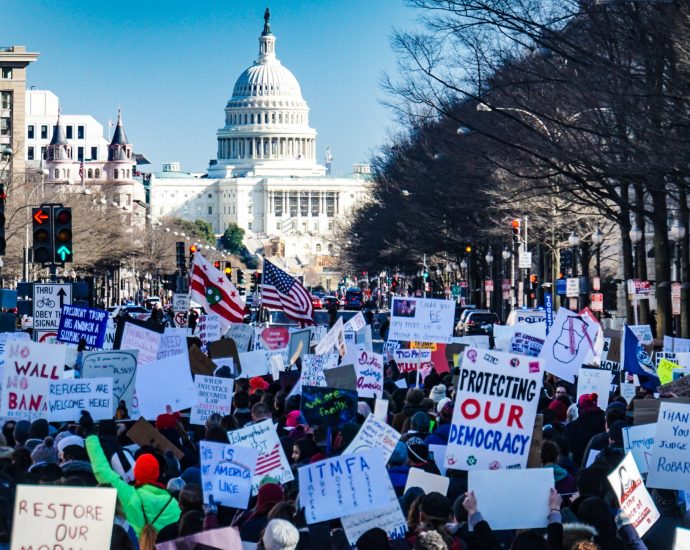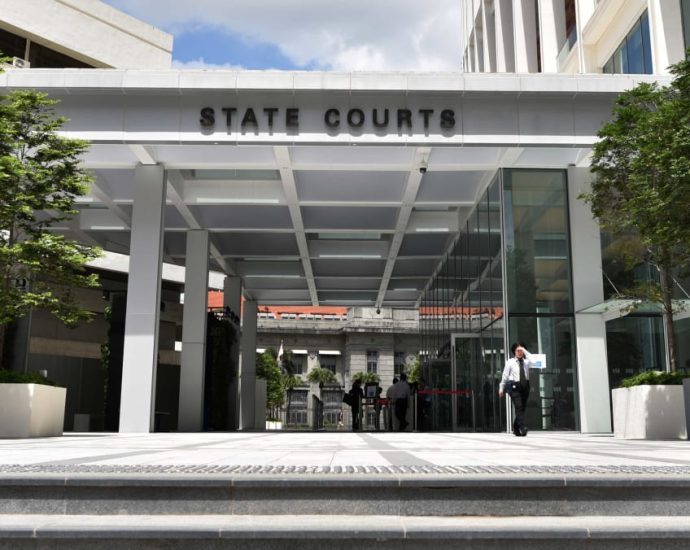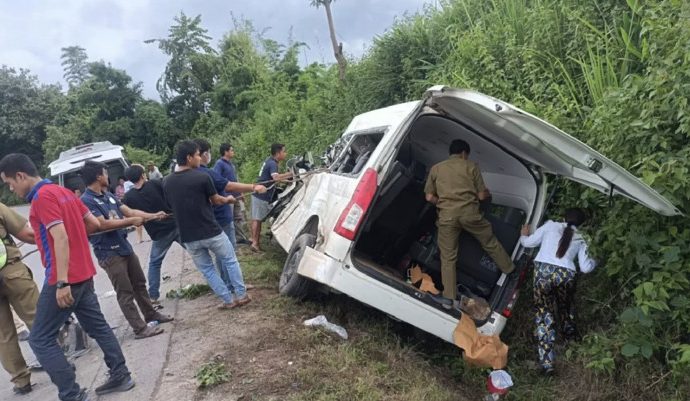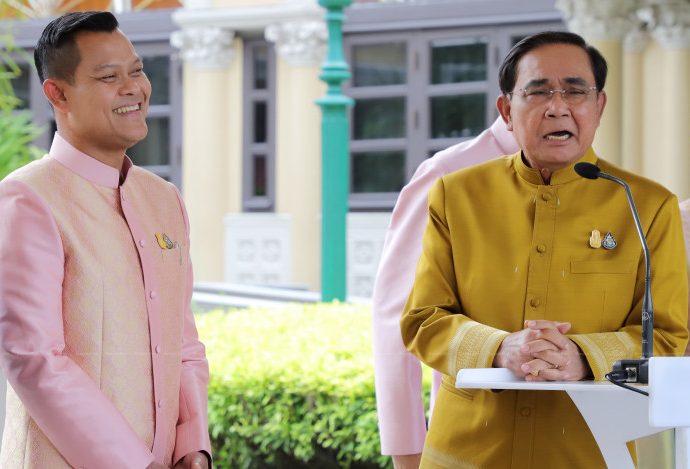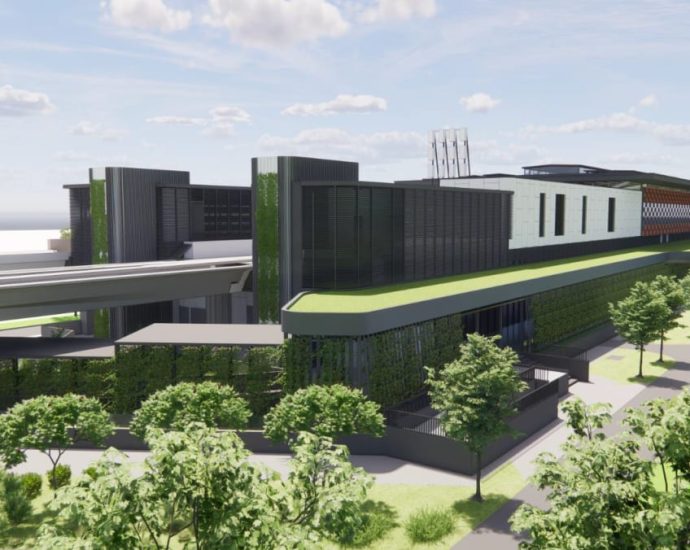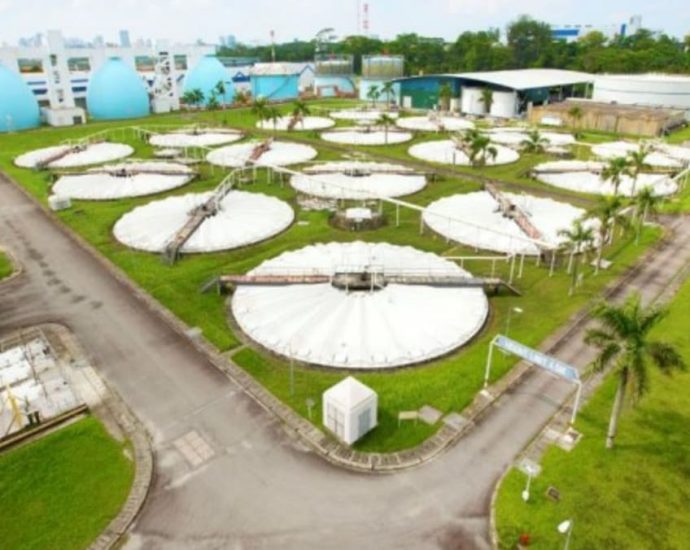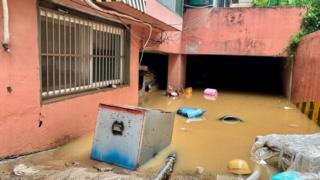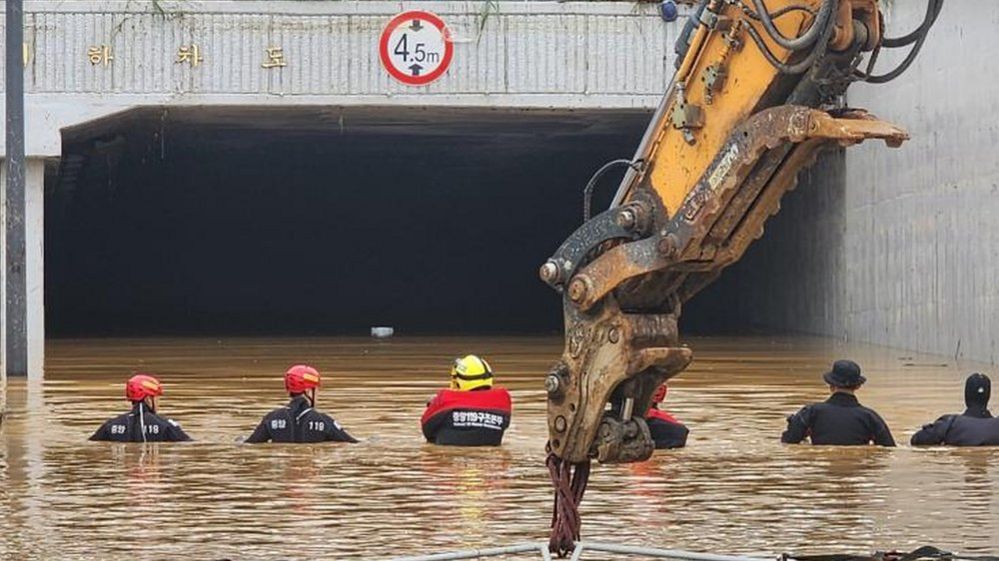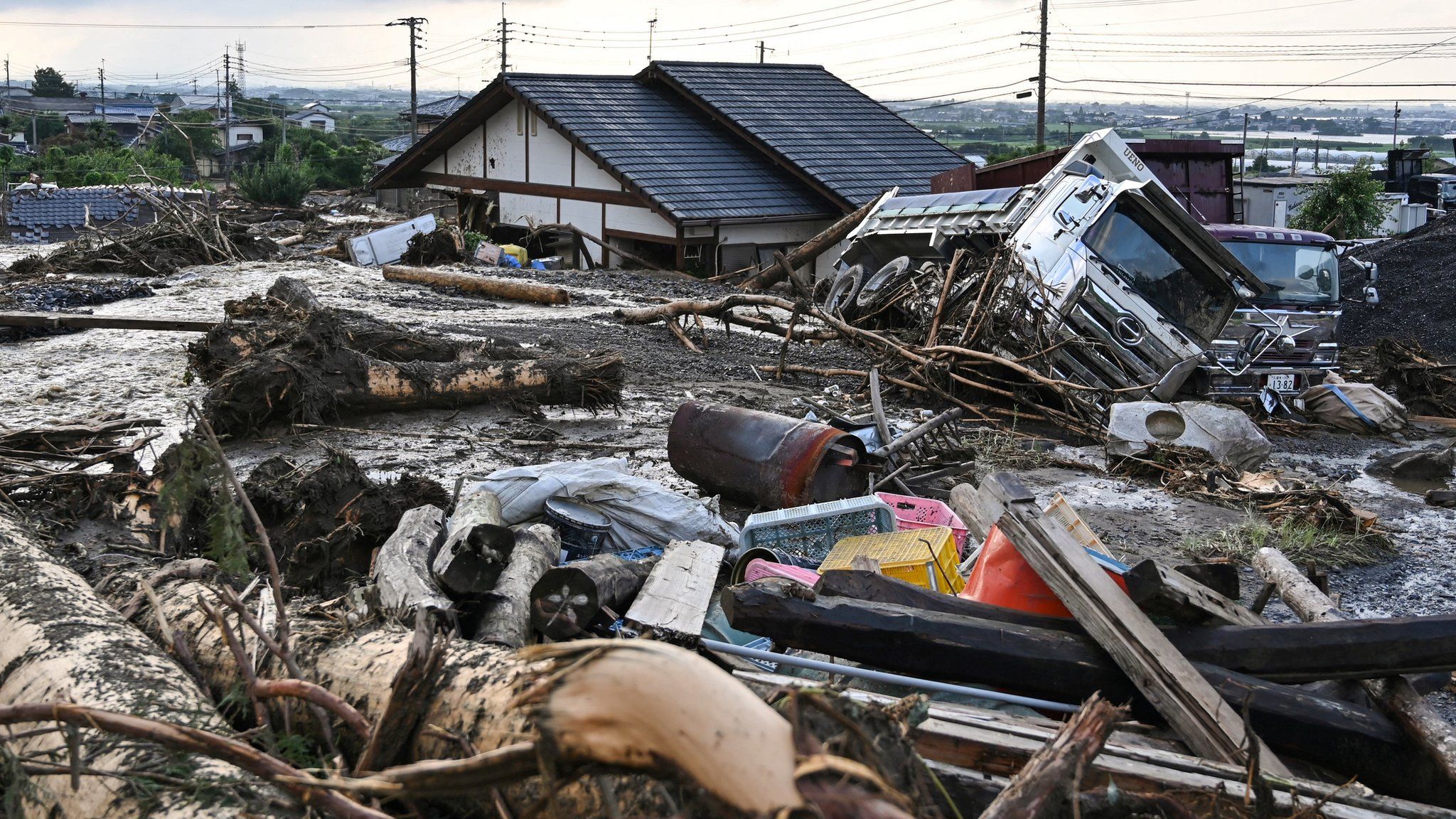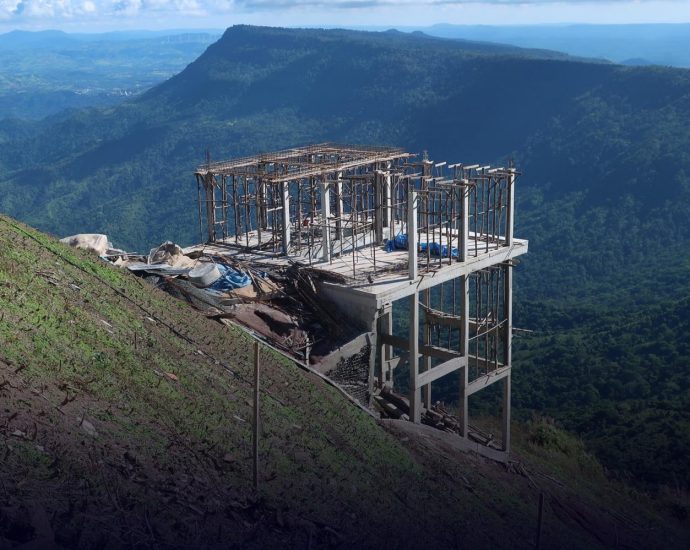Next phase of SGSecure asks individuals what roles they can play against terror threat

SINGAPORE: Extreme sports enthusiast Sheila Hassan nearly drowned doing water activities in Australia in 2000, but was saved by responders who threw her a lifeline.
The near-death experience motivated the 52-year-old to become a registered SGSecure responder. Her training came in handy last year, when she was mobilised after a man suffered a cardiac arrest near the gym where she was working.
She performed cardiopulmonary resuscitation on the man, who had collapsed in a toilet, and saved his life.
“I would encourage everybody to step forward, to be there, to make a difference in life,” she told CNA.
The Ministry of Home Affairs (MHA) on Friday (Jul 28) launched the next phase of the SGSecure movement, which urges Singaporeans to deepen social cohesion and play an active role to safeguard society from terrorism and extremism.
The SGSecure movement was introduced in 2016 to sensitise, train, and mobilise Singaporeans to play a part in preventing and dealing with a terrorist attack.
Ms Sheila is among the more than 140,000 community responders in its network.
SGSecure’s next phase will continue its focus on mobilising the community, as well as engaging youths and strengthening community partnerships.
“The real difficulty with Singapore is trying to persuade people that the terror threat is very real,” Law and Home Affairs Minister K Shanmugam said at the launch.
Referring to examples of extremist attacks in other countries, he said that if there were a successful attack in Singapore, the consequences would be “quite far-reaching”.
A terror attack, even one that is foiled, can deepen mistrust between groups of people and create a climate of fear, he said.
“It’s not just a terror attack, it’s what it does to our society and our unity,” added the minister.
As regional cities expand, urban poor risk being left behind
Un Raksmey and her husband were both widowed with two and three children each before they met and began a life together along a dusty road on the outskirts of the Cambodian tourism capital Siem Reap.
They built a rustic house with corrugated steel on a small plot of land that they’d bought in 2008. There, they began selling everyday products to repay their debts and support their children’s education.
But their economic struggles kept growing. By 2021, during the Covid-19 pandemic peak, the couple could no longer afford enough food for their children.
“He decided to ask his mom to allow him to use her land title to take more loans to buy more stuff to sell and to feed our kids,” Raksmey said, talking about her husband. “Life was so difficult because we were so poor and didn’t have knowledge, because he quit school in grade seven and I quit school in grade six.”
The couple and their six children are now one of the 75 poorest families in Siem Reap, as selected by an informal settlement relocation project led by the non-governmental organisation Habitat for Humanity Cambodia. In partnership with the local government, the non-profit aims at providing the selected households with a stable and safe house environment and ensuring their long-term financial stability.
The programme is one of many of its kind across fast-urbanising Southeast Asia as stories such as Raksmey and Leap’s become increasingly common. According to reports from the UN Development Programme (UNDP) and other institutions, Asia-Pacific is home to the largest concentration of people living in urban poverty. As regional cities absorb newcomers seeking economic opportunity and better access to public services, governments are pushed to find ways to absorb them into the social fabric.
“[The region] is more urban than rural since 2019, and the trend is that the urban population will continue growing in comparison to the rural one,” said Luis Noda, Asia-Pacific vice president at Habitat for Humanity International. “Many people are migrating to the cities looking for better opportunities. Unfortunately, this growth in population is surpassing the urban planning capacity of cities and newcomers end up living in informal settlements.”
If we decide to move, we’re not sure that we will earn the same income to repay the debt.”
Un Raksmey
Currently, one in four people in Cambodia lives in urban areas, according to the World Bank. In the Philippines, that number is one in two. About 40% of the urban population in these countries live in informal settlements. In conflict-stricken Myanmar, the bank’s latest data suggests 58% of the population is living in slums.
The stakes for better housing are high, not only for families but also for national interests. Habitat for Humanity asserts improving informal settlements can boost a country’s GDP by as much as 10.5% while improving quality of life for residents.
However, urban informal settlements do offer some benefits – namely cheap accommodation in areas where the poor might otherwise be priced out. Resettlement locations are often far-removed from city centres where residents can find better-paid work, and those who move away often struggle to rebuild their livelihoods.
This is the fear of Raksmey and her husband. The newly built resettlement village, named Veal, is six kilometres out of town. While most of the other families have already relocated, the couple is postponing to keep the little income they have managed to earn through their small shop.
“The reason [why] I am still here is because there are more customers here so we still can earn enough money to repay the debt,” Raksmey said. “And if we decide to move there, we’re not sure that we will earn the same income [as here] to repay the debt.”
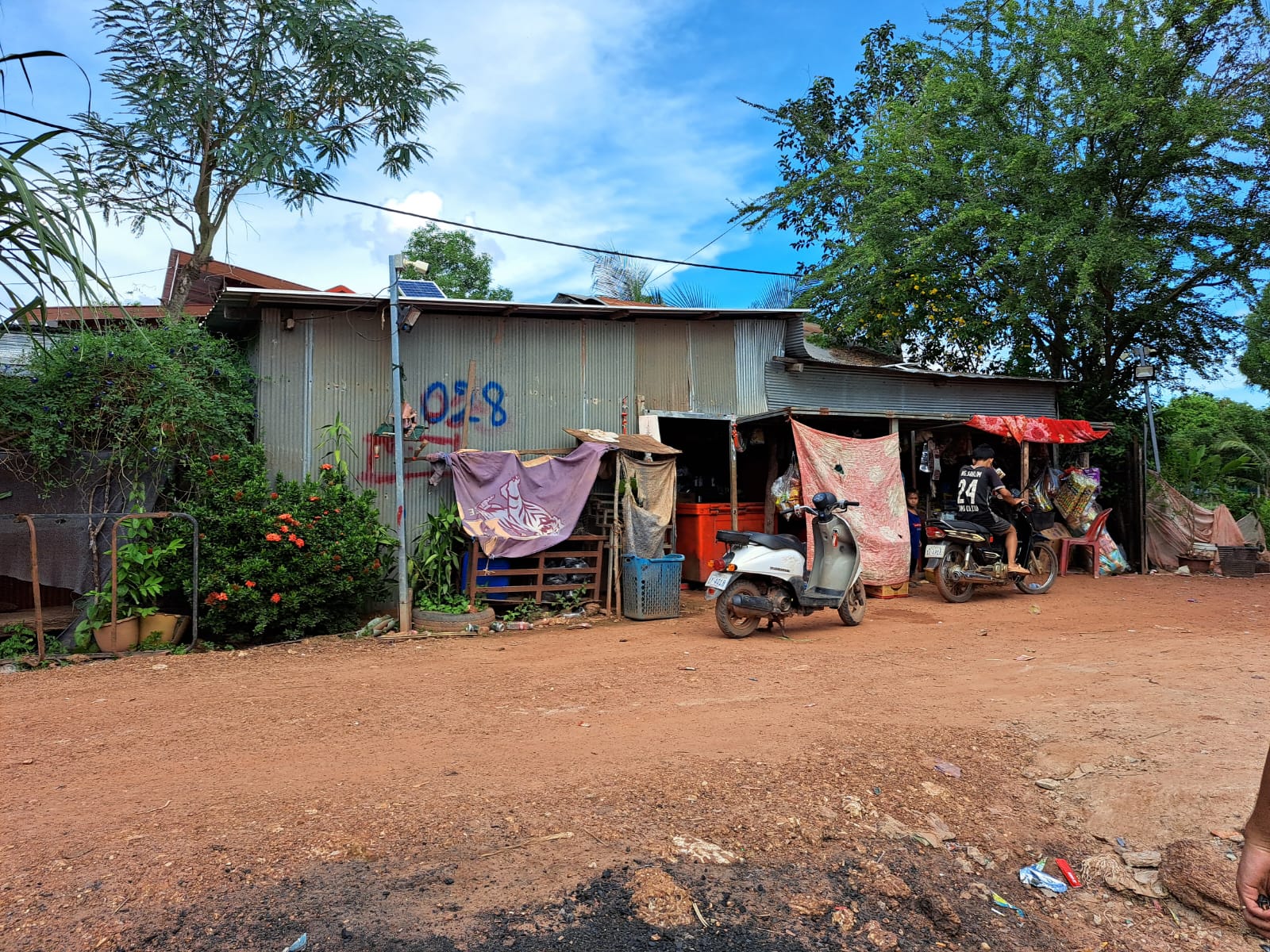
As marginalised families such as Raksmey’s weigh their options on the urban fringe, international non-profits have pushed more of their own focus into the region.
More than half of Habitat for Humanity’s global network is currently working on a campaign to address inadequate housing for informal settlements across the Asia-Pacific, from Nepal to Australia.
Much of this work is based in Southeast Asia. The organisation is doing policy work and identifying funding for housing rehabilitation in Indonesia while carrying out other major resettlement projects in Vietnam, Cambodia and Myanmar.
Pushed into an economic spiral by the 2021 military coup, Myanmar’s issues with urban poverty have become dire for many residents.
The risk of forced evictions since the military seized power has grown immensely.”
UNDP Myanmar Resident Representative Titon Mitra
“It is essential to also consider [that] low-income urban areas in Myanmar often lack basic services and infrastructure,” said UNDP Myanmar Resident Representative Titon Mitra, pointing to core needs such as access to clean water. “This further squeezes already low incomes and reduces the time for work or education. In the worst cases, people may risk illness using unclean sources.”
Yangon’s urban poor are those who are facing the harsher consequences of the bloody chapter of civil war started by the coup. Although not a conflict zone, the country’s largest city is home to thousands of internally displaced persons.
With that, a January UNDP report projected Yangon’s poverty rate to triple from 13.7% in 2017 to 41.9% in 2022.
“These people often live in informal settlements too, where their homes are flimsy and impermanent, and conditions are typically squalid and cramped,” Mitra said. “What’s more, the risk of forced evictions since the military seized power has grown immensely.”
According to his experience, people living in informal settlements – many of whom have lived there for decades – may be given just a few days’ notice to dismantle their homes and move out with no offer of an alternative place to live.
People living in the city’s poorest townships earn 30% less than those in the rest of the region and are more vulnerable to a host of social issues such as violence against women, limited access to drinkable water and school dropouts of children, according to the UNDP research.
“To create sustainable solutions to decrease urban poverty, it is critical to create more opportunities for people, including work and education,” Mitra said. “There needs to be support to the private sector to create jobs and efforts to train the workforce to fill those roles.”
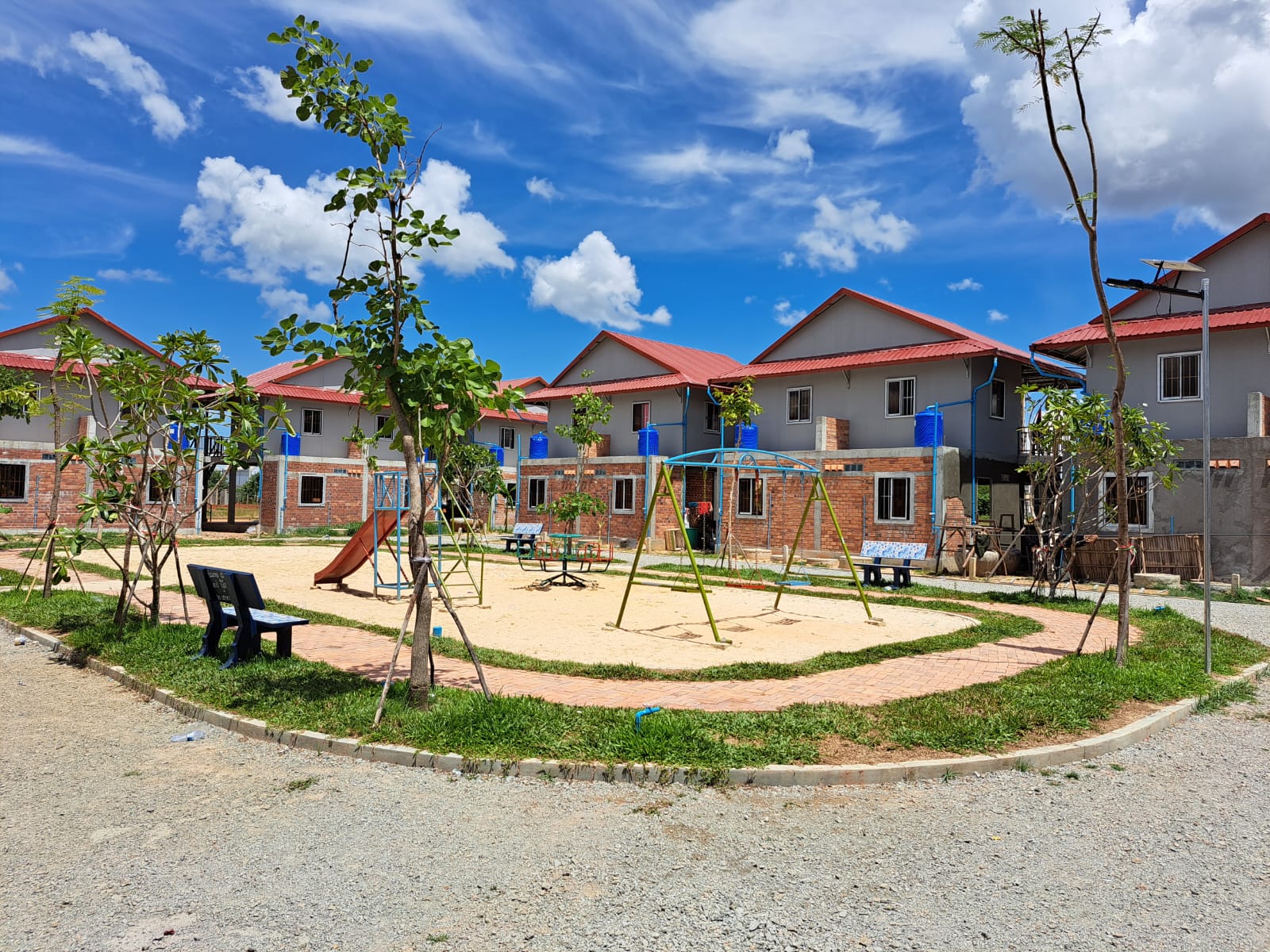
In an attempt to ease their conditions, the non-governmental organisation Step-in Step-up Academy, a delivery arm for UNDP, has been providing vocational training to Yangon youths.
Jackie Appel, the organisation’s founder, said the highest demand before the coup was usually in healthcare, office work and hospitality.
“We go out and we look for available jobs. We then create a tailored curriculum and call these very vulnerable people to join our training sessions,” Appel said. “But we cannot do this successfully without giving them food, vaccinating them, providing medical care and a stipend they can take home every month to give to their families.”
The number of trainees varies according to the job availability in Yangon and their age must be over 18. However, many families forge their children’s age in official documents to have them selected for the training.
We have to be able to get them jobs first. If there are no jobs, they can’t sustain their houses.”
Jackie Appel,, founder of Step-in Step-up Academy in Yangon
“This created another whole new area of concern,” Appel said. “But you can’t prove whether they are 18 or 14. Yet we couldn’t kick them out because they would be the perfect trafficked or exploited group of people. They’re the most vulnerable.”
Regardless of their real age, young adults have the potential to become breadwinners and support the cost of newly provided houses. But Appel also said, the potential to earn relies on opportunities being available – a factor outside a nonprofit’s control.
“Of course, these young people can sustain their own houses and their own communities,” she said. “But we have to be able to get them jobs first. If there are no jobs, they can’t sustain their houses.”
Post-coup Myanmar represents a particularly challenging landscape for international aid, but in general tight cooperation between institutions is key to successful housing improvement projects. Ensuring families can sustain themselves long-term is crucial for their well-being and that of their country, according to all the experts who spoke with the Globe.
In Cambodia, the most visible relocation project – a massive resettlement of thousands of families from Angkor Park in Siem Reap, home of the country’s historic temples – has cut a difficult path. Residents said they were forced from the park into a new zone far outside the city, away from the stream of tourists that many had relied on to make a living.
Habitat for Humanity was uninvolved with that effort, which is being handled solely by the Cambodian government. The nonprofit’s resettlement project at Veal village ensures the new residents are attached to an existing community, so the new families can integrate and work with local partners to find the support they need. The families also receive a range of training programmes, from vocational skills to family planning and basic land law.
“The lack of adequate housing in informal settlements is complex enough that no individual organisation can effectively tackle it alone,” Habitat for Humanity’s Noda said.
For resettlement at Veal, selection criteria included areas such as land ownership, household income of less than $1.90 per person a day, house size smaller than 4 square metres per person or the disability of a family member.
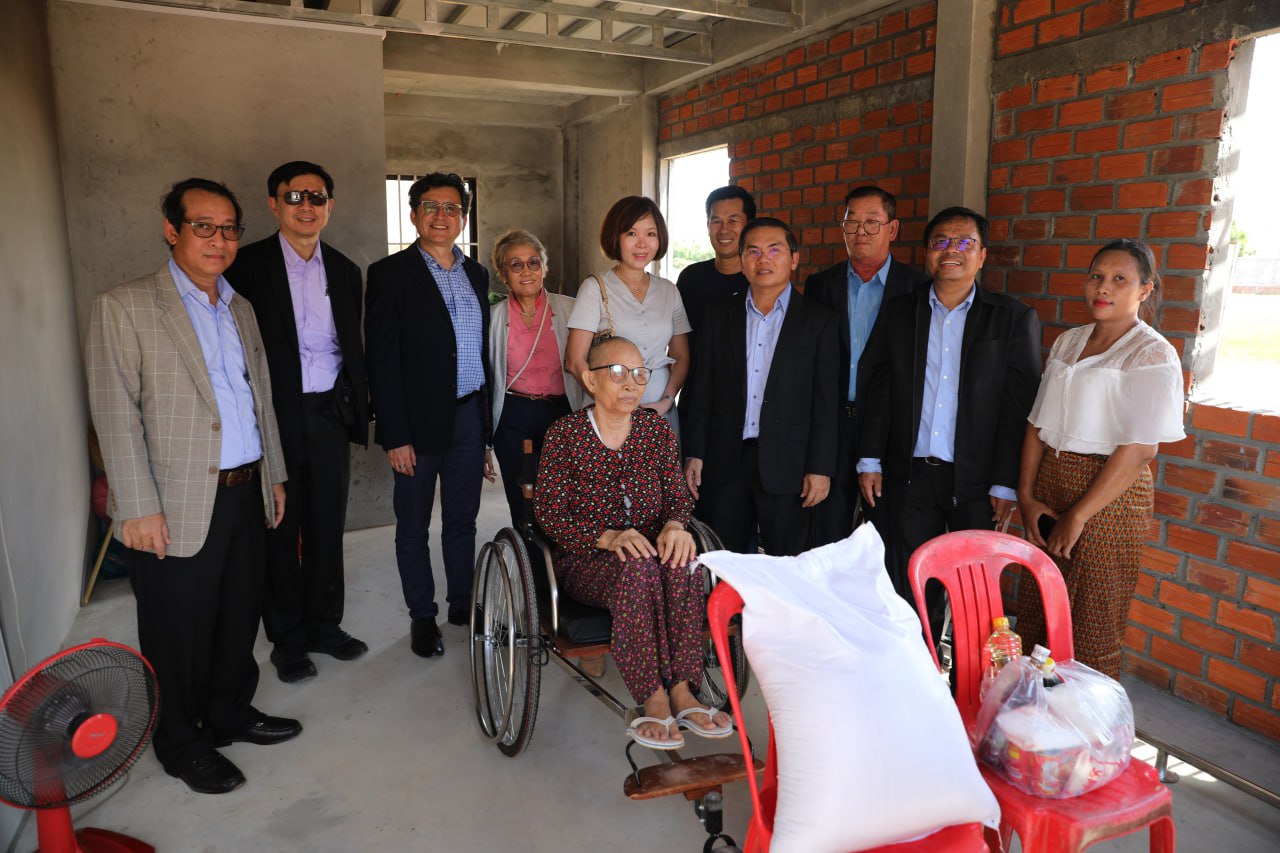
The chosen households were considered as the most vulnerable and hazardous and at high risk of living illegally on the state land, on infrastructure such as roads, canals or sewage systems. New Veal resident Lampo Leap, 35, said she was “excited” with the move.
“We no longer live in an odoured place,” Leap said. “Living along the canal was terrible. [The smell] affected our health. Living here, my mother sleeps better, and in the morning there is fresh air coming in.”
Leap is the deputy leader of the newly-built community, as well as a mother of a 10-year-old girl. She left her job at a local hotel four years ago, when her 73-year-old mother, who is now blind, started needing daily care. They have both been widows for more than a decade and have been relying on Leap’s brother’s income from his job in Thailand.
On a June afternoon in Veal, community leader Kung Sothy, 75, sat next to Leap after returning from a nearby bank to retrieve the monthly salaries for the village’s sewing group.
“While I am having a good house and permanent place to reside, I try to find more income [for my community] so that in the future we won’t face difficulty like before,” Sothy said.
Man abandoned car and ran away to avoid being nabbed for drink driving, gets jail
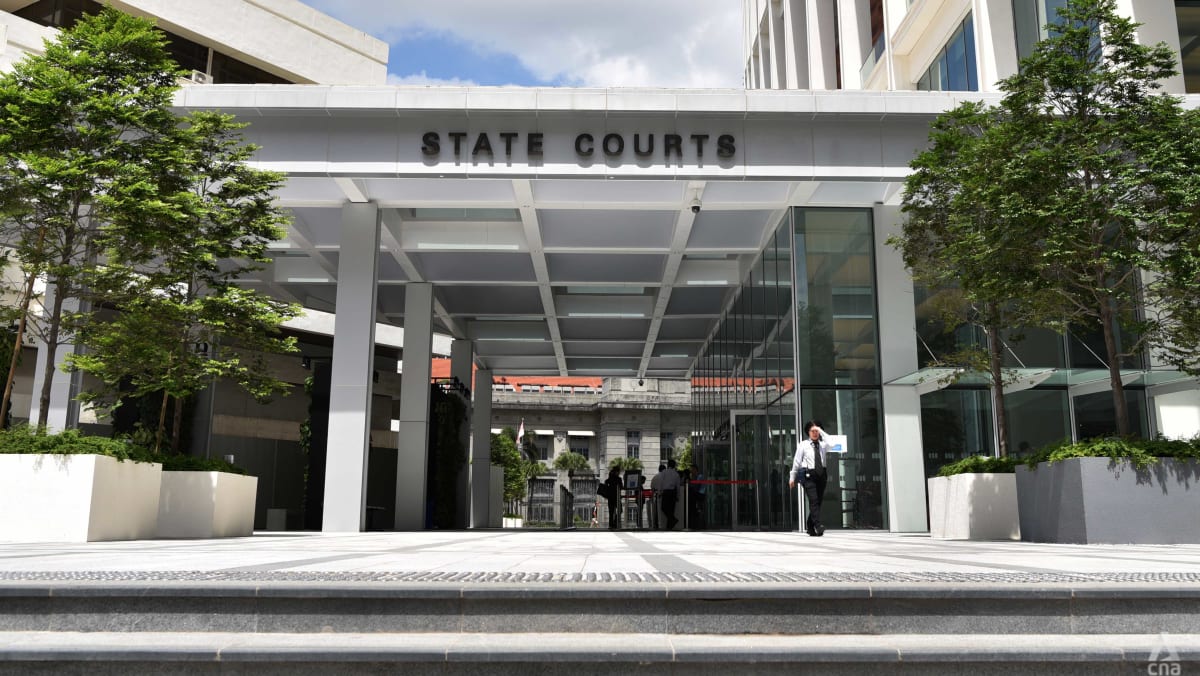
SINGAPORE: Wanting to avoid a police roadblock as he had been drink driving, a man abandoned his car at the exit of a commercial building, asked the security guard to watch his vehicle and fled on foot.
Singaporean Manikam Varatharaj, 45, was eventually nabbed by the police after the security guard walked to the roadblock to tell them what had happened.
He claimed trial, but was convicted of one count each of drink driving and leaving his car in a position that inconvenienced other road users.
On Friday (Jul 28), he was jailed for three weeks, fined S$6,800 and banned from driving for 42 months.
The court heard that Varatharaj was driving in Woodlands at about 2.30am on Sep 22, 2019 when he saw a police roadblock ahead of him.
He turned into a small road leading to the Seagate and 3M Singapore buildings, before making a U-turn at the end of the road and parking in front of a Seagate exit.
A security guard stationed at the 3M Singapore guardhouse approached Varatharaj, who asked the guard to look after the car because he “needed to go somewhere urgent”.
The guard warned Varatharaj that he would inform the police if Varatharaj did not remove his car from the premises.
Despite the warning, Varatharaj abandoned his car and ran away.
The guard saw that Varatharaj appeared “panicky” and reeked of alcohol, and the abandoned car was obstructing the exit lane such that any vehicle leaving Seagate would be forced to manoeuvre around it.
The guard walked to the police roadblock and told an officer what happened.
Police officers then drove down from Sembawang Neighbourhood Police Centre, and found two foreign workers arriving at the scene in a van.
They were Varatharaj’s workers, and they said their boss had asked them to go there.
While they were speaking to the police, Varatharaj called one of the workers. The police took over the call, and Varatharaj said to meet at his home in Woodlands.
Varatharaj admitted he drank two cans of beer and was on his way home when he saw the roadblock.
He told an officer he wanted to avoid detection and so abandoned his car as he did not want to get caught a second time for drink driving.
At trial, Varatharaj claimed he had not seen the police roadblock, and that he stopped the car because his hands and legs were trembling.
He claimed he had brought two cans of beer with him in his pockets after abandoning his car, and that he drank them at a coffeeshop.
The prosecution sought four to six weeks’ jail, a fine between S$8,000 and S$10,000 and four years’ driving ban.
Even though Varatharaj’s first drink driving conviction was 19 years ago in 2004, he was also given composition fines for using a phone while driving in 2011, as well as for speeding in 2012, said the prosecutor.
Long holiday a boon for Ko Samui tourism
PUBLISHED : 28 Jul 2023 at 15:08

The Ko Samui airport in the southern province of Surat Thani has become lively and crowded with many Thai and foreign tourists, who started arriving at this famous island resort on Friday, the first day of a six-day long holiday, thanks to the cabinet’s decision to declare Monday, July 31, an extra day off.
All Bangkok Airways flights from Suvarnabhumi airport in Samut Prakan province to Samui were fully booked, as were all direct flights to the island from Hong Kong and Singapore.
Many other tourists arrived at the island from Surat Thani by ferries.
It was initially estimated that at least 20,000 tourists would spend their time on Ko Samui during the long holiday, resulting in a substantial boost to the local economy.
Some visitors are also likely to continue their journey from Ko Samui to other popular islands, including Ko Pha-ngan and Ko Tao islands, especially the young ones who wish to attend the Full Moon Party on Ko Pha-ngan at Hat Rin beach on Aug 3.
Five Thais killed in road collision in Laos
PUBLISHED : 28 Jul 2023 at 15:07

Five Thais died in a road collision early Friday morning while passing through Laos to board a train to China.
The incident occurred in Boten of Luang Namtha province, Laos.
Just past midnight, a tour group of 20 people travelling in two passenger vans collided with an 18-wheeler truck on R3A Road connecting Chiang Khong district of Chiang Rai province to Boten. The accident occurred some 100 kilometres away from the Fourth Thai–Lao Friendship Bridge.
The group planned to board a train in Laos, continuing their journey to Kunming in China.
According to reports, teh collision happened when the truck slammed into one of the vans while making a wide turn.
The incident claimed the lives of five Thai passengers and a Laotian driver, and three other members of the tour group sustained injuries.
Chiang Khong rescue workers delivered the injured to Chiang Khong Crown Prince Hospital, while the bodies of four men and one woman were transported for funeral rites.
Prayut concerned about rallies by MFP supporters: Thanakorn
PUBLISHED : 28 Jul 2023 at 14:32

Caretaker Prime Minister Prayut Chan-o-cha is concerned about the rallies organised by supporters of the Move Forward Party (MFP) to vent their dissatisfaction with the Senate and the ongoing political situation, according to Prime Minister’s Office Minister Thanakorn Wangboonkongchana.
Gen Prayut had expressed concern about the rallies for fear that they could drag the country back into conflict between groups of people with different political views, Mr Thanakorn said on Friday.
Mr Thanakorn, who is deputy leader of the United Thai Nation Party (UTN), said he would like the MFP to tell its supporters to abide by the law. The supporters were not satisfied with most of the junta-appointed senators who did not vote for prime ministerial candidate Pita Limjaroenrat of the election-winning MFP.
He reiterated that the UTN would not vote for any prime ministerial candidate from a party with Move Forward as a coalition partner, mainly because of the MFP’s firm stance on amending Section 112 of the Criminal Code, or the lese majeste law.
When asked whether the Pheu Thai Party had approached the UTN to form a government, Mr Thanakorn said he was not aware of this, as the matter was being handled by the party leader and the secretary-general.
The UTN deputy leader expressed his confidence that his party and Pheu Thai can work together because it is now time for all sides to join hands to help the country to move steadily forward.
“I don’t see any problem for the two parties to work together, as long as we adhere mainly to the country’s interests,” Mr Thanakorn said. He also added that he believed the new prime minister would soon be selected once the concerned parties made a breakthrough in their negotiations.
Construction on new Brickland MRT station along North-South Line to start in 2024

SINGAPORE: Design and construction works on a new Brickland MRT station on the North-South Line are expected to start in 2024, the Land Transport Authority (LTA) announced on Friday (Jul 28).
The station will be located between Choa Chu Kang and Bukit Gombak stations, and is targeted for completion in 2034.
This will be the third MRT station to be built on an existing elevated rail line – after Canberra station, also on the North-South Line, and Dover station along the East-West Line, said LTA in a news release.
First announced as part of the Land Transport Masterplan 2040, Brickland is also one of two new stations to be added to the North-South Line. The other station, Sungei Kadut, will be a new interchange station between Yew Tee and Kranji stations, said LTA in 2019.
“Brickland station will help commuters in the area save up to 15 minutes in travel time towards the city centre and the commercial hub in Jurong Lake District,” said LTA on Friday.
For example, residents in Pavilion Estate travelling to Raffles Place can save up to 10 minutes with the new Brickland station, with the trip taking 40 minutes instead of the current 50 minutes.
And those living in Bukit Batok West Avenue 5 and heading to Jurong Lake District will take 10 minutes with the new station, compared to the current travel time of 25 minutes.
Site around former KTM railway identified for new Kranji water reclamation plant, NEWater factory
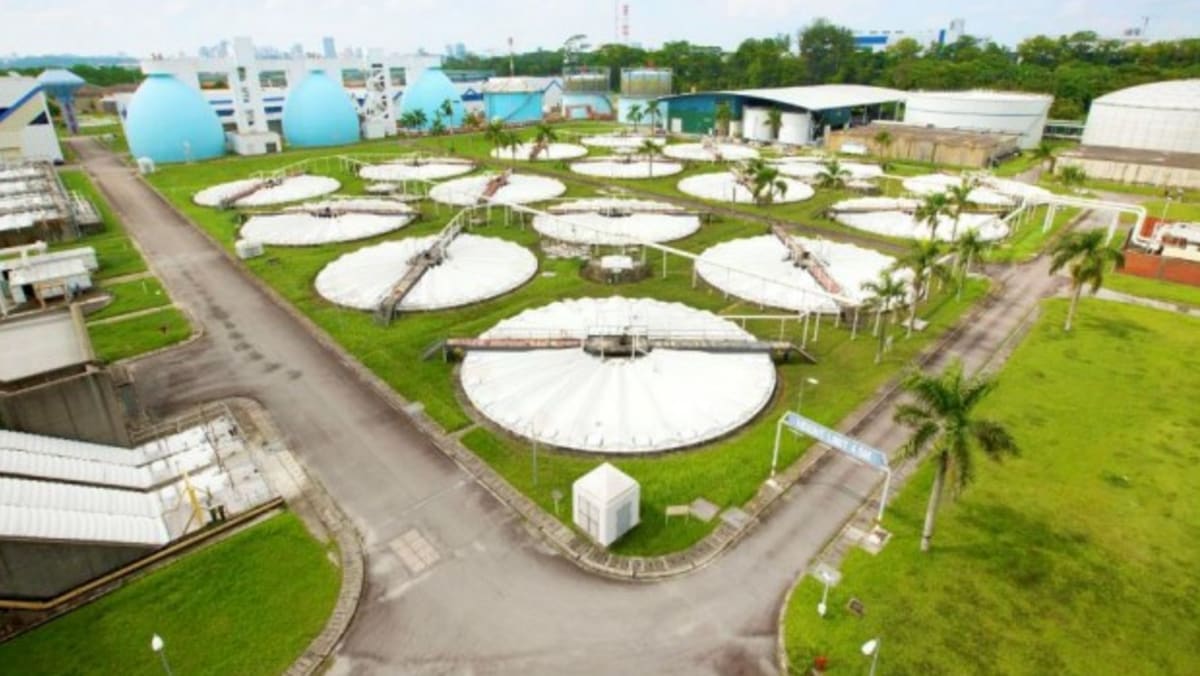
REALIGNMENT OF RAIL CORRIDOR
The realignment of the Rail Corridor facilitated plans to make the Kranji node a northern gateway into the Rail Corridor and it also “freed up a sizeable contiguous parcel of land” around the former KTM railway to be “optimally planned and redeveloped” to meet future needs.
PUB and URA said that agencies will strengthen the ecological connectivity of the realigned Rail Corridor with “enhanced planting and study measures such as landscaping strategies”.
This will integrate the Rail Corridor with the green provisions and “landscapes of future developments” to make it functionally wider where possible.
The National Parks Board (NParks) is also studying ways to enhance the ecological connectivity along Sungei Pang Sua and along Sungei Mandai to the Mandai mangrove and mudflat.
ASSESSING ENVIRONMENTAL IMPACT OF REDEVELOPMENT
The consultant for professional engineering services that PUB is seeking to appoint will need to carry out a detailed assessment to assess the potential environmental impact of the redevelopment.
It will also need to conduct a heritage study of the former KTM railway alignment and the former Kampong Wak Selat and cemetery at the site.
Both findings will “be considered, and mitigation measures to minimise the environment impact will be developed and implemented during the construction and operation of the project”, said PUB and URA.
The authorities added that nature group representatives have been consulted early to help scope the environmental impact assessment to ensure a robust and comprehensive study.
Agencies had also gathered feedback from nature and heritage groups during briefings and site visits and the ecological connectivity of the area will continue to be enhanced as the project progresses, according to PUB and URA.
Additionally, agencies are also exploring options to commemorate the former KTM railway alignment, allowing the public to have a better appreciation of the historical significance of the site.
“In strengthening Singapore’s water resilience, we aim to strike a good balance between optimising land use and the need to protect the environment,” said PUB and URA.
S Korea tunnel tragedy: Officials ignored multiple warnings
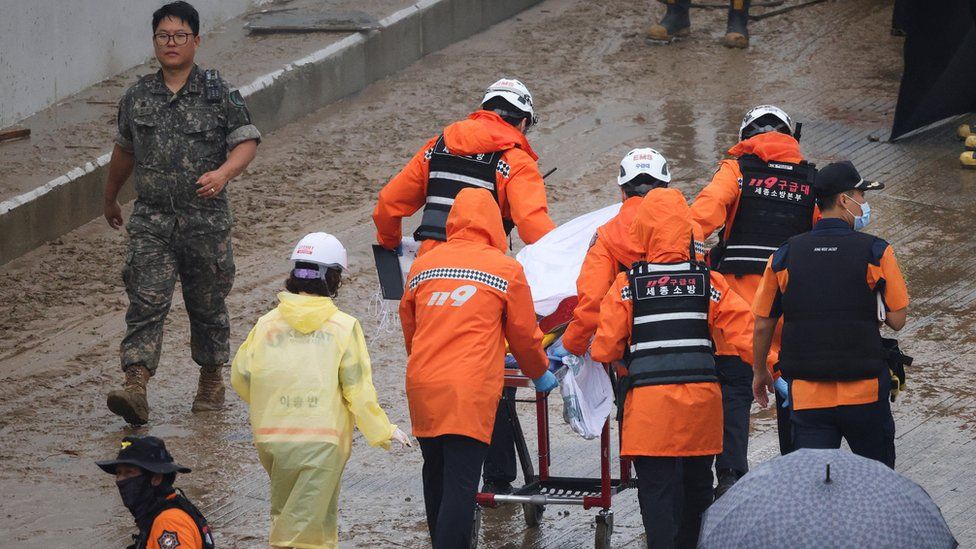 Reuters
ReutersA total of 36 local officials in South Korea are under investigation for the tunnel flooding earlier this month that killed 14 people, authorities said.
An inquiry launched two days after the tragedy found that officials had ignored multiple warnings of a flood ahead of the incident.
Severe rains on the weekend of 15 July had caused widespread flooding and landslides in multiple places.
At least 40 people died in the disaster across the country.
The tunnel, located in city of Cheongju south of Seoul, was flooded with water from a nearby riverbank that had burst from the weekend of torrential rain.
Fifteen vehicles, including a bus, were trapped in the underpass submerged under water – only nine people survived. Authorities had to work for several days to free the vehicles.
Following the incident, police launched an investigation to determine the cause and found that it could have been prevented.
“[The flood] was the result of numerous agencies failing to recognise the seriousness of the situation and respond actively, despite receiving several warnings,” said Bang Moon-kyu, South Korea’s minister of government policy coordination.
Three calls warning of a possible tunnel flooding were made to the emergency hotlines on the day of the incident, he added.
A construction supervisor had similarly warned authorities seven times about the possibility that the tunnel would flood.
The public officials have been accused of failing to promptly assess and manage the situation. Two of them were found to have replaced the river embankment – walls meant to prevent flooding – with a weaker version.
“The government plans to seek the removal of positions for those responsible for the accident, even including elected positions,” said minister Bang.
Extreme rain and flooding have pummelled several other countries in Asia this month, including India, China, and Japan.
Scientists have long warned that climate change would make extreme weather events like heavy rainfall and heatwaves stronger and more likely.
Last year, South Korea saw record-breaking rains, causing floods that killed at least 11 people, including two women and a teenager trapped in a semi-basement flat in Seoul.
Related Topics
-
-
11 August 2022
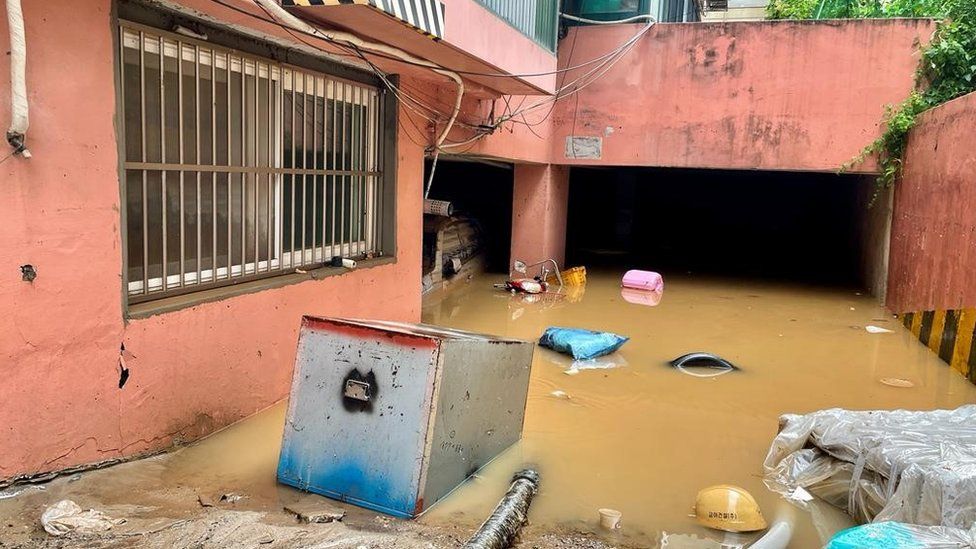
-
National park chief probed after discovery of encroaching resorts
PUBLISHED : 28 Jul 2023 at 13:28
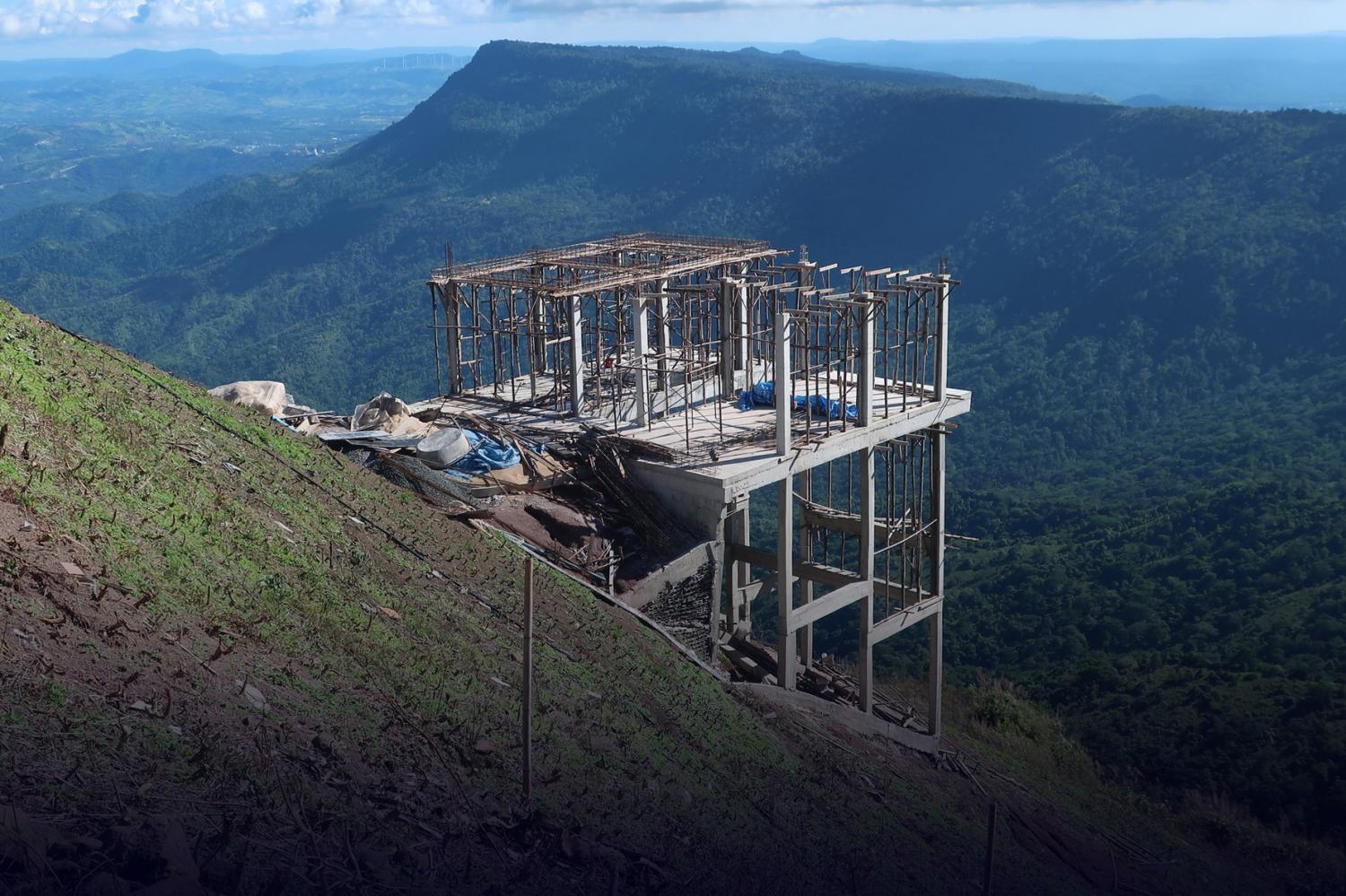
The head of Khao Kho National Park has been ordered to be transferred to an inactive post, and an inquiry has been launched after several resorts were found encroaching on a forest reserve in Phetchabun province.
On Thursday, an operation was conducted, led by the Internal Security Operations Command (Isoc) and Khao Koh National Park chief Prasan Iadsang. The investigation focused on Pha Hua Sing (lion head cliff), which is part of the national park.
Authorities found two resorts illegally occupying park territory. The first one is Phu Thap Boek Suansawan, situated just over 200 metres from the edge of Pha Hua Sing on a 69-rai (110,400-square-metre) plot of land. The second resort, known as Good View-Hot View Suansawan Phu Thap Boek, was approximately 100 metres from the cliff’s edge and included a 100-metre-long stretch of land being used for tent camping.
The documentation of both sites has been seized, and they have been charged with violating forestry laws, including the unauthorised destruction of natural resources.
Atthaphon Charoenchansa, director-general of the Department of National Parks, Wildlife and Plant Conservation, said on Friday that the issue is not being taken lightly, and the head of the national park has been ordered transferred out of the area to an inactive post and will be subjected to a thorough investigation by a committee.
The demolition of the violating resorts has been authorised, Mr Atthaphon added.


